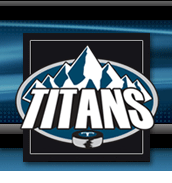August 29th, 2007
Determining Stick Length
A standard for determining stick length is to stand without skates and place the toe of the stick on the ground between your feet. Position the stick against your body to that the stick touches your nose. Make a mark where the stick touches your nose and this is where you should cut the stick. When you hit the ice, your stick should then come up to your chin, which represents a standard reference for proper length. Of course there are exceptions to this where certain types of players prefer longer or shorter sticks, such as a defenseman who prefers a longer stick for poke checking.

0 Comments | Save to del.icio.us
April 30th, 2001
The Hook Check
by Dan Brennan (American Hockey Magazine April 2001)
The hook check is a very effective skill to be used when skating in from behind the puck or ball carrier. This check should only be used by a defensive player when they are in close because if the player misses, they'll be in a poor position to continue checking and may wind up tripping their opponent.
- Keep the shaft of your stick near the surface as the blade makes contact with your opponent's stick.
- Turn the front of the blade upward while it is on the surface.
- Pull the puck or ball back towards you.

2 Comments | Save to del.icio.us
April 29th, 2001
The Poke Check
by Dan Brennan (American Hockey Magazine April 2001)
The poke check is usually performed on a one-on-one situation in the middle of the surface. The poke check can be very effective as long as you keep skating and maintain speed. If you are standing still and are unsuccessful with the poke check, you could leave your opponent with an opportunity to go right by you.
- Keep your top hand on the stick with your arm bent, leaving the blade on the surface
- Maintain speed, do not slow down and poke. Your don't want to telegraph your move to the offensive player
- Keep your eyes on the middle of the offensive player's chest
- Like a boxer, use the poke check like a jab. If you knock the puck away, great. If not, you are still skating and you can react to the offensive player and try again.

0 Comments | Save to del.icio.us
February 14th, 2001
The Power Play: Taking Advantage
by Mark Johnson (University of Winsconsin assistant coach and a member of the 1980 U.S. Olympic Team)
Five against four; five against three; four against three. A power play is a great part of the game that is unique to hockey. You don't have it in football. You don't have it in basketball either. Without a doubt it's a key part of the game. On the average you play with a man advantage or shorthanded roughly one third of every hockey game. Proper practice is a priority!
Five Ingredients For A Potent Power Play
- Players must have good passing skills. (Your ability to pass the puck is the most important aspect of a power play)
- Be able to execute one-touch passes. (As players develop shooting strength, they must be able to shoot off the pass.)
- Players must be able to read and react to defenses.
- Either the puck or the offensive team must keep moving.
- Move to the open Ice. Support by a teammate or teammates must be immediate. (Players must try and think one or two passes ahead.)
Drills For Improving Your Power Play
- Stationary passing
- Passing in pairs
- One-touch passing
- Circle drill (keep away or man in the middle)
- 2-on-1 out of the corner
- 3-on-2 deep in the zone

0 Comments | Save to del.icio.us

